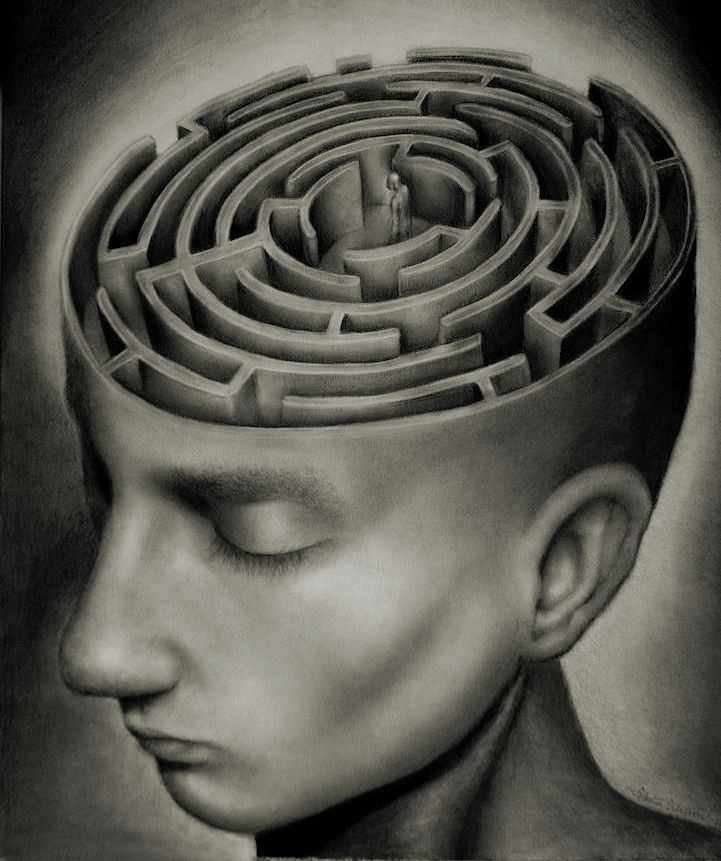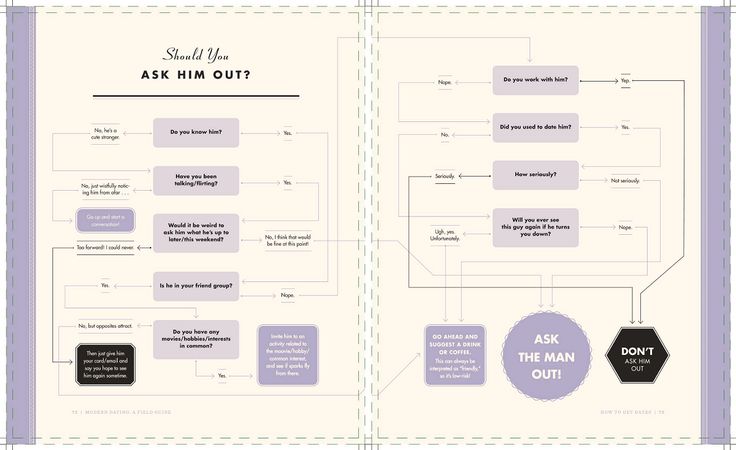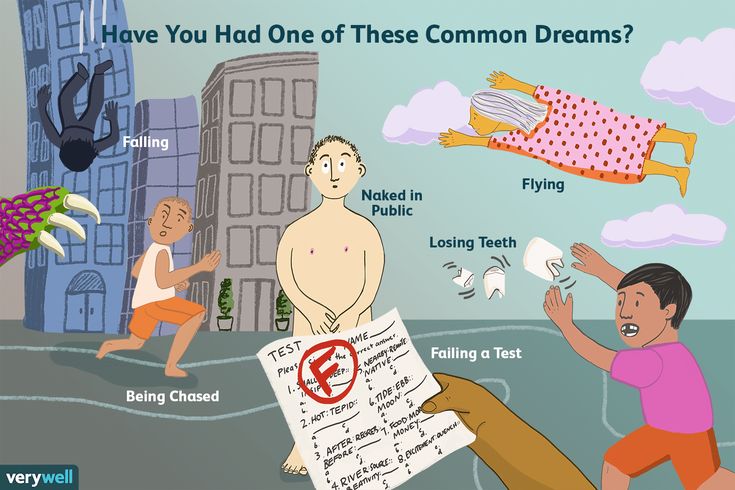Thoughts in mind
Thoughts Are Just Thoughts: How to Stop Worshiping Your Anxious Mind
08.21.2019
Michael Stein, PsyD
Dr. Michael Stein is a licensed clinical psychologist who has spent 14 years specializing in the treatment of anxiety disorders and OCD using Exposure Therapy and other evidence-based behavioral interventions. He is the founder and owner of Anxiety Solutions, a group private practice that serves clients with anxiety and OCD both online and at its offices in Denver, CO; Reno, NV; and Boise, ID. He is also the author of "How to Stop Overanalyzing", a self-help video series. He sees clients, teaches, and supervises other therapists from Anxiety Solutions' Denver office. He is passionate about both helping his own clients overcome anxiety and OCD and expanding access to quality care for these problems.
August 21, 2019
Thoughts Are Just Thoughts: How to Stop Worshiping Your Anxious Mind
View the ADAA Live Webinar with ADAA members Drs. Kissen and Greene - What Are Intrusive Thoughts and How Can You Deal with Them?
If you suffer from anxiety, you probably have a contentious and complicated relationship with your mind. It feels like your mind tortures you. It gives you all these thoughts about what you should be scared of and horrible things that could happen to you.
It tells you that you need to worry, analyze, and seek reassurance about all these things. It never shuts up. It won't leave you alone. Perhaps worst of all, when you try to tell it why you probably don't need to be afraid of all the things it says will happen, it calls you crazy or stupid or any number of bad names. It's a bully.
It feels like your mind is torturing you.
And yet…you worship your mind. You take what it says very seriously. You believe that if your mind says something, it must be important. It must mean something. No matter how mean your mind is to you, you give it the utmost respect and trust. That's the problem.
It is your torturer, and yet you worship it. In what other situation would you ever want to worship your own torturer?
The problem is not the fact that your mind gives you negative thoughts; the problem is that you take your mind so seriously. Just because your mind says something is important does not mean it actually is important. Just because something feels important also does not mean it is important.
Thoughts are just thoughts.
Thoughts are not facts. Thoughts are not meaningful. The content of your thoughts is not important.
What is important is how you treat your mind. If you take everything it says seriously, give it too much respect, and put too much trust in your mind, that is a recipe for an anxiety disorder.
There is a healthier way to approach your mind: don't take it so seriously. Don't believe everything it says. Don't treat your mind as a trustworthy source of information, especially about the things that make you anxious.
Don't get me wrong, you don't have a bad mind. It's not that your mind feeds you meaningless, negative thoughts and everyone else's mind is on target. This is how all minds work.
It's not that your mind feeds you meaningless, negative thoughts and everyone else's mind is on target. This is how all minds work.
Your mind is just doing what minds do. Our minds like to warn us about stuff because our minds think they are keeping us safe by doing this. Your mind would always rather err on the side of giving you a warning than not because it is more likely to keep you physically safe that way, and your mind cares about that more than anything. But just because your mind is doing its job, that doesn't mean the thoughts actually mean anything. Again, thoughts are just thoughts.
When you have a thought that your relationship partner might leave you, that's just a fart noise in your head. Treat it as such: ignore it and move on with whatever you were actually doing with your day.
When you have a thought that you touched something dirty and you might catch a deadly disease, that's just a random neuron firing in your brain. It means nothing. Treat it as such: be dismissive toward your mind and don't give it any of your attention or time.
When you have a thought that your anxiety will never get better, that's just a buzzing sound in your head. Treat it as such: sarcastically say to your mind, "Good one, thanks for that, keep 'em coming!"
Remember, when you treat your mind this way, it doesn't mean your mind will necessarily stop saying things like this. Your mind is going to do what it wants to do; you don't have control over the thoughts that pop into your head. No one actually does. The important thing is not what thoughts you have, it's what you do when you have those thoughts.
So the next time your mind starts spinning about why you should feel anxious about something, try to react to it differently. Don't worship your mind, recognize that it is a false god unworthy of your trust, respect, time, or attention. Instead, get back to whatever you are doing right in front of you in the present moment and put your effort into that.
Even though you can't stop your mind from continuing to give you negative thoughts, that's okay, because thoughts are just thoughts.
Michael Stein, PsyD
Dr. Michael Stein is a licensed clinical psychologist who has spent 14 years specializing in the treatment of anxiety disorders and OCD using Exposure Therapy and other evidence-based behavioral interventions. He is the founder and owner of Anxiety Solutions, a group private practice that serves clients with anxiety and OCD both online and at its offices in Denver, CO; Reno, NV; and Boise, ID. He is also the author of "How to Stop Overanalyzing", a self-help video series. He sees clients, teaches, and supervises other therapists from Anxiety Solutions' Denver office. He is passionate about both helping his own clients overcome anxiety and OCD and expanding access to quality care for these problems.
Anxiety
Anxiety Disorders
ADAA Blog Content and Blog Comments Policy
ADAA Blog Content and Blog Comments Policy
ADAA provides this Website blogs for the benefit of its members and the public. The content, view and opinions published in Blogs written by our personnel or contributors – or from links or posts on the Website from other sources - belong solely to their respective authors and do not necessarily reflect the views of ADAA, its members, management or employees.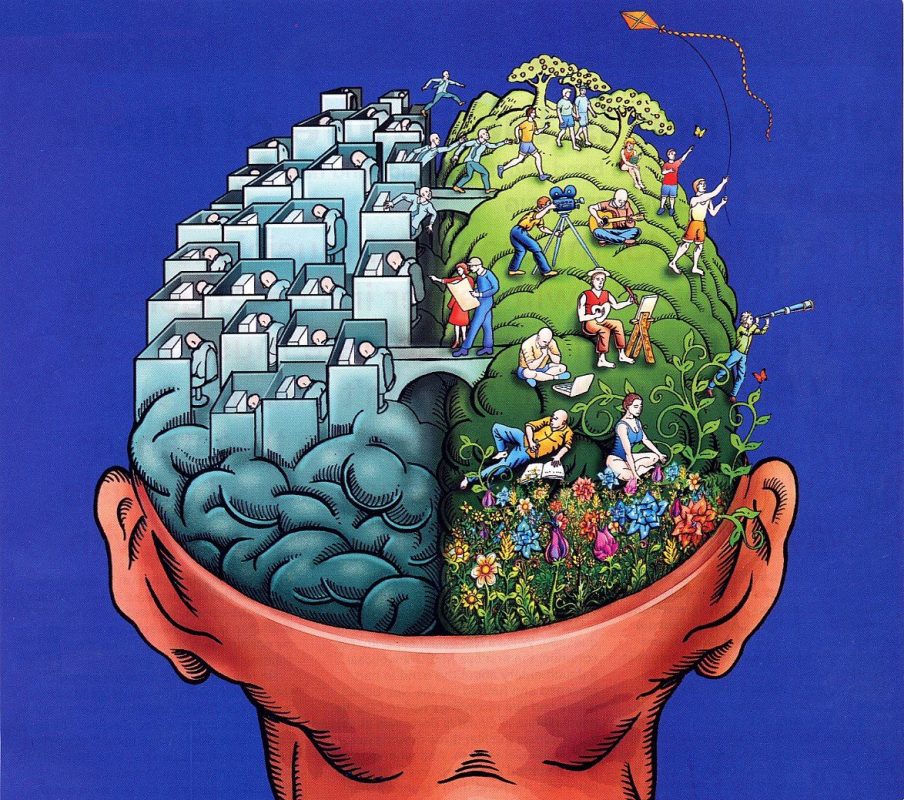 Any comments or opinions expressed are those of their respective contributors only. Please remember that the open and real-time nature of the comments posted to these venues makes it is impossible for ADAA to confirm the validity of any content posted, and though we reserve the right to review and edit or delete any such comment, we do not guarantee that we will monitor or review it. As such, we are not responsible for any messages posted or the consequences of following any advice offered within such posts. If you find any posts in these posts/comments to be offensive, inaccurate or objectionable, please contact us via email at [email protected] and reference the relevant content. If we determine that removal of a post or posts is necessary, we will make reasonable efforts to do so in a timely manner.
Any comments or opinions expressed are those of their respective contributors only. Please remember that the open and real-time nature of the comments posted to these venues makes it is impossible for ADAA to confirm the validity of any content posted, and though we reserve the right to review and edit or delete any such comment, we do not guarantee that we will monitor or review it. As such, we are not responsible for any messages posted or the consequences of following any advice offered within such posts. If you find any posts in these posts/comments to be offensive, inaccurate or objectionable, please contact us via email at [email protected] and reference the relevant content. If we determine that removal of a post or posts is necessary, we will make reasonable efforts to do so in a timely manner.
ADAA expressly disclaims responsibility for and liabilities resulting from, any information or communications from and between users of ADAA’s blog post commenting features. Users acknowledge and agree that they may be individually liable for anything they communicate using ADAA’s blogs, including but not limited to defamatory, discriminatory, false or unauthorized information. Users are cautioned that they are responsible for complying with the requirements of applicable copyright and trademark laws and regulations. By submitting a response, comment or content, you agree that such submission is non-confidential for all purposes. Any submission to this Website will be deemed and remain the property of ADAA.
Users are cautioned that they are responsible for complying with the requirements of applicable copyright and trademark laws and regulations. By submitting a response, comment or content, you agree that such submission is non-confidential for all purposes. Any submission to this Website will be deemed and remain the property of ADAA.
The ADAA blogs are forums for individuals to share their opinions, experiences and thoughts related to mental illness. ADAA wants to ensure the integrity of this service and therefore, use of this service is limited to participants who agree to adhere to the following guidelines:
1. Refrain from transmitting any message, information, data, or text that is unlawful, threatening, abusive, harassing, defamatory, vulgar, obscene, that may be invasive of another 's privacy, hateful, or bashing communications - especially those aimed at gender, race, color, sexual orientation, national origin, religious views or disability.
Please note that there is a review process whereby all comments posted to blog posts and webinars are reviewed by ADAA staff to determine appropriateness before comments are posted. ADAA reserves the right to remove or edit a post containing offensive material as defined by ADAA.
ADAA reserves the right to remove or edit a post containing offensive material as defined by ADAA.
ADAA reserves the right to remove or edit posts that contain explicit, obscene, offensive, or vulgar language. Similarly, posts that contain any graphic files will be removed immediately upon notice.
2. Refrain from posting or transmitting any unsolicited, promotional materials, "junk mail," "spam," "chain mail," "pyramid schemes" or any other form of solicitation. ADAA reserves the right to delete these posts immediately upon notice.
3. ADAA invites and encourages a healthy exchange of opinions. If you disagree with a participant 's post or opinion and wish to challenge it, do so with respect. The real objective of the ADAA blog post commenting function is to promote discussion and understanding, not to convince others that your opinion is "right." Name calling, insults, and personal attacks are not appropriate and will not be tolerated. ADAA will remove these posts immediately upon notice.
4. ADAA promotes privacy and encourages participants to keep personal information such as address and telephone number from being posted. Similarly, do not ask for personal information from other participants. Any comments that ask for telephone, address, e-mail, surveys and research studies will not be approved for posting.
5. Participants should be aware that the opinions, beliefs and statements on blog posts do not necessarily represent the opinions and beliefs of ADAA. Participants also agree that ADAA is not to be held liable for any loss or injury caused, in whole or in part, by sponsorship of blog post commenting. Participants also agree that ADAA reserves the right to report any suspicions of harm to self or others as evidenced by participant posts.
RESOURCES AND NEWS
Evidence-based Tips & Strategies from our Member Experts
RELATED ARTICLES
Block reference
TAKING ACTION
BabyGirl's Enduring Impact: Helping Those with Anxiety and Depression
BabyGirl was a miniature (puddin) Jack Russell who was 8 years old and only 6 pounds. She was…
She was…
Read More
Load More
How to Control Your Thoughts and Be the Master of Your Mind
Your mind is the most powerful tool you have for the creation of good in your life, but if not used correctly, can also be the most destructive force in your life. To control your thoughts means to influence the way you live your life.
Your mind, more specifically, your thoughts, affects your perception and therefore, your interpretation of reality. (And here’s Why Your Perception Is Your Reality)
I have heard that the average person thinks around 70,000 thoughts a day. That’s a lot, especially if they are unproductive, self-abusive, and just a general waste of energy.
You can let your thoughts run amok, but why would you? It is your mind, your thoughts; isn’t it time to take your power back? Isn’t it time to take control?
Choose to be the person who is actively, consciously thinking your thoughts. Be someone who can control your thoughts—become the master of your mind.
When you change your thoughts, you will change your feelings as well, and you will also eliminate the triggers that set off those feelings. Both of these outcomes provide you with a greater level of peace in your mind.
I currently have a few thoughts that are not of my choosing or a response from my reprogramming. I am the master of my mind, so now my mind is quite peaceful. Yours can be too!
Table of Contents
- Who Is Thinking My Thoughts?
- How to Master Your Mind
- The Bottom Line
- More About Mental Strength
Who Is Thinking My Thoughts?
Before you can become the master of your mind, you must recognize that you are currently at the mercy of several unwanted “squatters” living in your mind, and they are in control of your thoughts.
If you want to be the boss of them, you must know who they are and what their motivation is, and then you can take charge and evict them.
Here are four of the “squatters” in your head that create unhealthy and unproductive thoughts.
1. The Inner Critic
This is your constant abuser who is often a conglomeration of:
- Other people’s words—many times your parents
- Thoughts you have created based on your own or other peoples’ expectations
- Comparing yourself to other people, including those in the media
- The things you told yourself as a result of painful experiences such as betrayal and rejection. Your interpretation creates your self-doubt and self-blame, which are most likely undeserved in cases of rejection and betrayal.
The Inner Critic is motivated by pain, low self-esteem, lack of self-acceptance, and lack of self-love.
Why else would this person abuse you? And since this person is you—why else would you abuse yourself? Why would you let anyone treat you this badly?
View this post on Instagram
A post shared by Lifehack for Goal Diggers (@lifehackorg)
2.
 The Worrier
The WorrierThis person lives in the future—in the world of “what ifs.”
The Worrier is motivated by fear, which is often irrational and has no basis. Occasionally, this person is motivated by fear that what happened in the past will happen again.
3. The Reactor or Troublemaker
This is the one that triggers anger, frustration, and pain. These triggers stem from unhealed wounds of the past. Any experience that is even closely related to a past wound will set him off.
This person can be set off by words or feelings and can even be set off by sounds and smells.
The Reactor has no real motivation and has poor impulse control. He is run by past programming that no longer serves you—if it ever did.
4. The Sleep Depriver
This can be a combination of any number of different squatters including the inner planner, the rehasher, and the ruminator, along with the inner critic and the worrier.
The Sleep Depriver’s motivation can be:
- As a reaction to silence, which he fights against
- Taking care of the business you neglected during the day
- Self-doubt, low self-esteem, insecurity, and generalized anxiety
- As listed above for the inner critic and worrier
How can you control these squatters?
How to Master Your Mind
You are the thinker and the observer of your thoughts.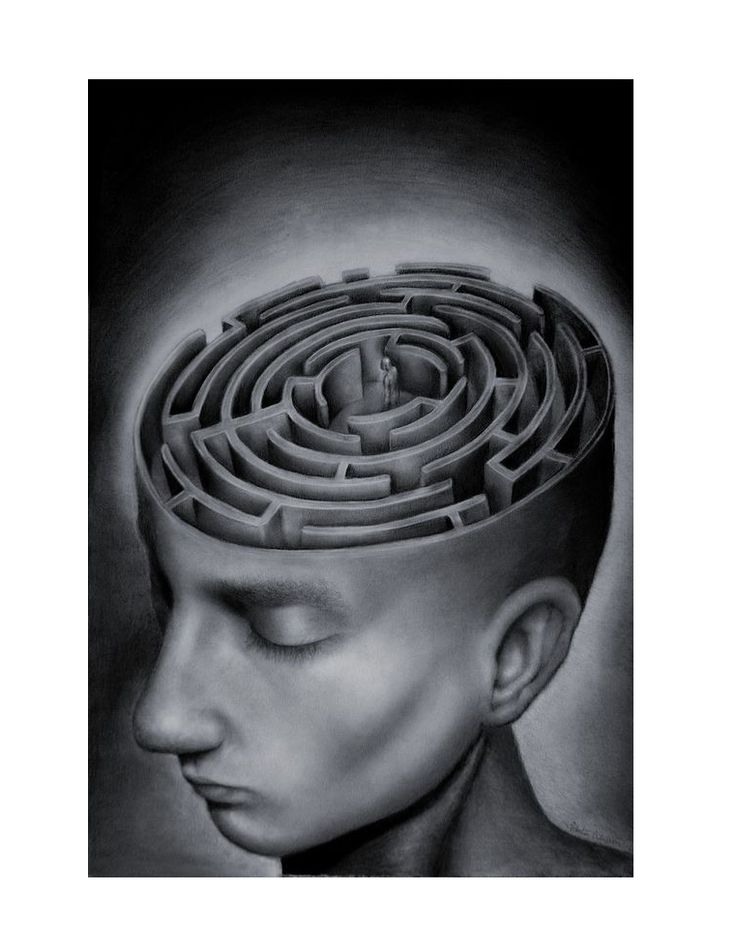 You can control your thoughts, but you must pay attention to them so you can identify “who” is running the show—this will determine which technique you will want to use.
You can control your thoughts, but you must pay attention to them so you can identify “who” is running the show—this will determine which technique you will want to use.
Begin each day with the intention of paying attention to your thoughts and catching yourself when you are thinking undesirable thoughts.
There are two ways to control your thoughts:
- Technique A – Interrupt and replace them
- Technique B – Eliminate them altogether
This second option is what is known as peace of mind.
The technique of interrupting and replacing is a means of reprogramming your subconscious mind. Eventually, the replacement thoughts will become the “go-to” thoughts in applicable situations.
Use Technique A with the Inner Critic and Worrier and Technique B with the Reactor and Sleep Depriver.
1. For the Inner Critic
When you catch yourself thinking something negative about yourself (calling yourself names, disrespecting yourself, or berating yourself), interrupt it.
⌄ Scroll down to continue reading article ⌄
⌄ Scroll down to continue reading article ⌄
You can yell (in your mind), “Stop! No!” or, “Enough! I’m in control now.” Then, whatever your negative thought was about yourself, replace it with an opposite or counter thought or an affirmation that begins with “I am.”
For example, if your thought is, “I’m such a loser,” you can replace it with, “I am a Divine Creation of the Universal Spirit. I am a perfect spiritual being learning to master the human experience. I am a being of energy, light, and matter. I am magnificent, brilliant, and beautiful. I love and approve of myself just as I am.”
You can also have a dialogue with yourself to discredit the ‘voice’ that created the thought—if you know whose voice it is:
“Just because so-and-so said I was a loser doesn’t make it true. It was his or her opinion, not a statement of fact. Or maybe they were joking and I took it seriously because I’m insecure.”
Or maybe they were joking and I took it seriously because I’m insecure.”
If you recognize that you have recurring self-critical thoughts, you can write out or pre-plan your counter thoughts or affirmation so you can be ready.
This is the first squatter you should evict, forcefully, if necessary:
- They rile up the Worrier.
- The names you call yourself become triggers when called those names by others, so he also maintains the presence of the Reactor.
- They are often present when you try to fall asleep so he perpetuates the Sleep Depriver.
- They are a bully and is verbally and emotionally abusive.
- They are the destroyer of self-esteem. They convince you that you’re not worthy. They’re a liar! In the interest of your self-worth, get them out!
Eliminate your worst critic and you will also diminish the presence of the other three squatters.
Replace them with your new best friends who support, encourage, and enhance your life. This is a presence you want in your mind.
This is a presence you want in your mind.
2. For the Worrier
Prolonged anxiety is mentally, emotionally, and physically unhealthy. It can have long-term health implications.
Fear initiates the fight or flight response, creates worry in the mind, and creates anxiety in the body. This may make it more difficult for you to control your thoughts effectively.
You should be able to recognize a “worry thought” immediately by how you feel. The physiological signs that the fight or flight response of fear has kicked in are:
- Increased heart rate, blood pressure, or surge of adrenaline
- Shallow breathing or breathlessness
- Muscles tense
Use the above-stated method to interrupt any thought of worry and then replace it. But this time, you will replace your thoughts of worry with thoughts of gratitude for the outcome you wish for.
If you believe in a higher power, this is the time to engage with it. Here is an example:
Instead of worrying about my loved ones traveling in bad weather, I say the following (I call it a prayer):
“Thank you great spirit for watching over _______. Thank you for watching over his/her car and keeping it safe, road-worthy, and free of maintenance issues without warning. Thank you for surrounding him/her with only safe, conscientious, and alert drivers. And thank you for keeping him/her safe, conscientious, and alert.”
Thank you for watching over his/her car and keeping it safe, road-worthy, and free of maintenance issues without warning. Thank you for surrounding him/her with only safe, conscientious, and alert drivers. And thank you for keeping him/her safe, conscientious, and alert.”
Smile when you think about it or say it aloud, and phrase it in the present tense. Both of these will help you feel it and possibly even start to believe it.
⌄ Scroll down to continue reading article ⌄
⌄ Scroll down to continue reading article ⌄
If you can visualize what you are praying for, the visualization will enhance the feeling so you will increase the impact in your vibrational field.
Now, take a calming breath, slowly in through your nose, and slowly out through the mouth. Take as many as you like! Do it until you feel that you’re close to being in control of your thoughts.
Replacing fearful thoughts with gratitude will decrease reactionary behavior, taking the steam out of the Reactor.
For example: If your child gets lost in the mall, the typical parental reaction that follows the fearful thoughts when finding them is to yell at them.
“I told you never to leave my sight.” This reaction just adds to the child’s fear level from being lost in the first place.
Plus, it also teaches them that mom and/or dad will get mad when he or she makes a mistake, which may make them lie to you or not tell you things in the future.
Change those fearful thoughts when they happen:
“Thank You (your choice of Higher Power) for watching over my child and keeping him safe. Thank you for helping me find him soon.”
Then, when you see your child after this thought process, your only reaction will be gratitude, and that seems like a better alternative for all people involved.
3. For the Troublemaker, Reactor or Over-Reactor
Permanently eliminating this squatter will take a bit more attention and reflection after the fact to identify and heal the causes of the triggers. But until then, you can prevent the Reactor from getting out of control by initiating conscious breathing as soon as you recognize his presence.
But until then, you can prevent the Reactor from getting out of control by initiating conscious breathing as soon as you recognize his presence.
The Reactor’s thoughts or feelings activate the fight or flight response just like with the Worrier. The physiological signs of his presence will be the same. With a little attention, you should be able to tell the difference between anxiety, anger, frustration, or pain.
I’m sure you’ve heard the suggestion to count to ten when you get angry—well, you can make those ten seconds much more productive if you are breathing consciously during that time.
Conscious breathing is as simple as it sounds—just be conscious of your breathing. Pay attention to the air going in and coming out.
Breathe in through your nose:
- Feel the air entering your nostrils.
- Feel your lungs filling and expanding.
- Focus on your belly rising.
Breathe out through your nose:
- Feel your lungs emptying.

- Focus on your belly falling.
- Feel the air exiting your nostrils.
Do this for as long as you like. Leave the situation if you want. This gives the adrenaline time to normalize. Now, you can address the situation with a calmer, more rational perspective and avoid damaging behavior, and you’ll be more in control of your thoughts.
⌄ Scroll down to continue reading article ⌄
⌄ Scroll down to continue reading article ⌄
One of the troubles this squatter causes is that it adds to the sleep depriver’s issues. By evicting or at least controlling the Reactor, you will decrease reactionary behavior, which will decrease the need for the rehashing and ruminating that may keep you from falling asleep.
Master your mind and stop the Reactor from bringing stress to you and your relationships!
Most importantly, find your real motive. What’s your inner drive that can help you to keep on moving? If you’re not sure, join the free Fast-Track Class – Activate Your Motivation. It’s a free intensive session that will help you identify your inner drive and build your unique motivation engine around it. Join the free session here.
It’s a free intensive session that will help you identify your inner drive and build your unique motivation engine around it. Join the free session here.
4. For the Sleep Depriver
(They’re made up of the Inner Planner, the Rehasher, and the Ruminator, along with the Inner Critic and the Worrier.)
I was plagued with a very common problem: not being able to turn off my mind at bedtime. This inability prevented me from falling asleep and thus, getting a restful and restorative night’s sleep.
Here’s how I mastered my mind and evicted the Sleep Depriver and all his cronies.
- I started by focusing on my breathing—paying attention to the rise and fall of my belly—but that didn’t keep the thoughts out for long. (Actually, I now start with checking my at-rest mouth position to keep me from clenching.)
- Then I came up with a replacement strategy that eliminated uncontrolled thinking—imagining the word in while breathing in and thinking the word out when breathing out.
 I would (and do) elongate the word to match the length of my breath.
I would (and do) elongate the word to match the length of my breath.
When I catch myself thinking, I shift back to in, out. With this technique, I am still thinking, sort of, but the wheels are no longer spinning out of control. I am in control of my mind and thoughts, and I choose quiet.
From the first time I tried this method, I started to yawn after only a few cycles and am usually asleep within ten minutes.
For really difficult nights, I add an increase of attention by holding my eyes in a looking-up position (closed, of course). Sometimes I try to look toward my third eye but that really hurts my eyes.
If you have trouble falling asleep because you can’t shut off your mind, I strongly recommend you try this technique. I still use it every night. You can start sleeping better tonight!
You can also use this technique any time you want to:
- Fall back to sleep if you wake up too soon
- Shut down your thinking
- Calm your feelings
- Simply focus on the present moment
Your mind is a tool, and like any other tool, it can be used for constructive purposes or destructive purposes.
You can allow your mind to be occupied by unwanted, undesirable, and destructive tenants, or you can choose desirable tenants like peace, gratitude, compassion, love, and joy.
Your mind can become your best friend, your biggest supporter, and someone you can count on to be there and encourage you. You can be in control of your thoughts. The choice is yours!
More About Mental Strength
- How to Stop Worrying About the Future: 8 Practical Techniques
- 40 Ways to Achieve Peace Of Mind and Inner Calm
- How to Stop Racing Thoughts When Your Mind Won’t Let Up
Featured photo credit: Priscilla Du Preez via unsplash.com
What is rumination and how to stop analyzing everything
September 3, 2020Life
Obsessive thoughts can lead to serious negative consequences.
Share
0 You can not only read this article, but also listen to it. If it's more convenient for you, turn on the podcast.
What is rumination
We all sometimes endlessly think about something: a long-past presentation of a working project, yesterday's quarrel with the second half, a toast that we agreed to make at a friends wedding. Yes, and a quarterly report on the nose. We go over in our heads what we had to say, or we try to plan everything down to the smallest detail.
In most cases, this is relatively safe and no more stressful than having an annoying song stuck in your head. But there are people who just can't stop thinking about things. And this creates even greater experiences.
Such an irresistible habit of rethinking everything is called rumination, or mental chewing gum. Repetitive experiences, when a person endlessly scrolls the same situation in his head, resemble the process of chewing grass by cows.
They chew, swallow, then regurgitate and chew again. For them, this is a normal process. Well, we, people, constantly “chew” our disturbing thoughts. And there is nothing good in this.
And there is nothing good in this.
Rumination does not bring any benefit, but only steals time and energy. It is so debilitating that it makes a person more vulnerable to anxiety and depression, while also being a symptom of these conditions.
Regardless of whether we can change what happened or predict something, our brain sometimes gets fixated on trying to control the uncontrollable. And as a result, a depressed person reflects on the losses and mistakes of the past, and an anxious hostage of rumination drowns in questions “what if?”, while always drawing a negative outcome in his imagination.
As a rule, most complex issues are resolved by careful thought and weighing. But rumination is simply the repetition of thoughts (usually negative ones) without trying to look at the problem from a different point of view.
Rumination makes it impossible to get a different idea or understanding of the problem. She just spins you like a hamster stuck in a wheel of emotional torment.
Guy Winch
psychologist, psychology author, TED speaker
The Harm of Obsessive Thoughts
They tend to be pessimistic
Usually you don't think about good things for a long time, but fixate on bad things. You don’t remember how you managed to resolve the situation at the last moment or make a good joke, but you sort through the negative in your head for a long time and stubbornly.
And thoughts are intrusive. They constantly pop up in the mind, it is very difficult to get rid of them. Especially when thinking about something is really upsetting and disturbing.
Provoke the development of serious diseases
Guy Winch in his book Emotional First Aid: Healing Rejection, Guilt, Failure, and Other Everyday Hurts states that returning to anxious thinking is like constantly picking at emotional wounds, not allowing them to heal. Every time we have that same thought, it causes anxiety, and stress hormones are released in the body in huge quantities.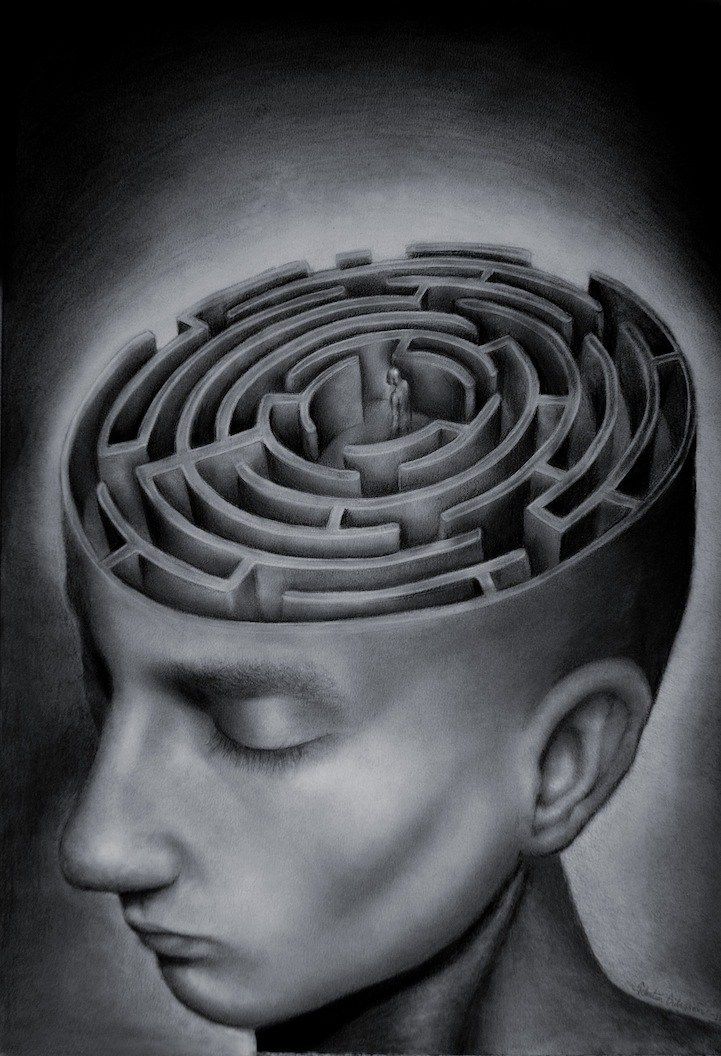
We can languish in our sad thoughts for several hours and days and thus put ourselves in a state of physical and emotional stress. As a result, the habit of constant thinking significantly increases the risk of developing clinical depression, impaired decision-making ability, eating disorders, substance abuse, and even cardiovascular disease.
Negatively Affects the Brain
Margaret Wehrenberg, a psychologist and author of books on anxiety and depression, claims that constant repetitive thinking leads to changes in the neural circuitry in the brain.
“Rumination actually changes its structure, just as a footpath turns first into a carriageway, and then into a wide motorway with a large number of exits. And every time it becomes easier and easier to immerse yourself in thoughts.
Do not allow distraction
At some point, rumination becomes a habitual way of thinking. And as a result, it is difficult to switch to something else. The one who thinks, "If I just think about it long enough, I'll figure it all out," is making a mistake. After all, the more familiar the thought, the more difficult it is to get rid of it.
After all, the more familiar the thought, the more difficult it is to get rid of it.
How to Stop Thinking
Practice Mindfulness
As with many mental health issues, mindfulness always helps. The first step is to determine which of your thoughts are intrusive and mentally label them as dangerous.
According to Winch, when a thought repeats itself frequently - or starts to do so - you need to catch on to it and turn it into a task that will help solve the problem.
For example, change the phrase "I can't believe this happened" to "What can I do to make sure this doesn't happen again?". "I don't have any close friends!" - in "What steps to take to strengthen relationships with friends and find new ones?".
Stop bad thoughts at the beginning
Prepare a supply of positive affirmations. For example, "I'm trying my best" or "I will be supported if needed."
According to Wehrenberg, in order to keep a repetitive thought from returning to its usual path, you need to "wipe the trail", that is, plan what to think about instead.
Sounds simple, but it's one of those things that's easy to understand and hard to do.
Get distracted to get out of the vicious circle
Winch advises redirecting your attention to something that requires focus. Take a break for 2-3 minutes: put together a puzzle, complete a memory task. Any activity that requires concentration will be enough to get rid of the irresistible craving for obsessive thoughts.
If you are distracted every time such a thought occurs, then the frequency and intensity with which it pops up in the mind will decrease.
Keep a diary where you will splash out your experiences
It may seem strange to suggest paying even more attention to obsessive thoughts. But writing them down is helpful. Especially for those who often cannot fall asleep due to thinking.
In this case, put a notepad and pen by the bed and write down whatever is bothering you. Then tell yourself that since these thoughts are now on paper, you will definitely not forget them. And now you can take a break from them for a while.
And now you can take a break from them for a while.
Seek Help
Mindfulness meditation and cognitive techniques most often help people take control of their own thinking. But there are times when a person still can not cope with the problem alone.
If you feel that obsessive thoughts seriously interfere with your life, you should contact a professional.
Read also 🧐
- Why you can’t fight depression alone
- How to fall asleep quickly: 15 science-based ways
- Scientists have identified a mechanism that suppresses intrusive thoughts
why terrible thoughts come to our minds - T&P
It's good that there is no mind-reading device yet, otherwise any of us would be caught red-handed. After all, even the most meek and delicate person can sometimes rejoice at the failure of his neighbor or feel a desire to crush someone's head. Why do respectable citizens watch dismembered thrillers with pleasure, while ardent liberals sometimes catch themselves in xenophobia? And is it possible to prevent such "thought crimes"? Jena Pincott wrote about it on Psychology Today, and T&P translated the main points.

Each of us sometimes catches ourselves thinking wrong, frightening or vile thoughts. To bend over a cute baby and suddenly think: "I can easily crush his skull." Comfort a friend who has experienced a collapse in his personal life, and secretly savor the humiliating details of his story. Ride with relatives in a car and imagine in detail how you lose control and drive into the oncoming lane.
The more persistently we try to distract ourselves from these ideas, the more intrusive they become and the worse we feel. This is not easy to admit, but we do enjoy primitive thrills and other people's misfortune. People have amazingly little control over their own black thoughts: we have no control over their duration or content.
In his famous experiment in the 1980s, Eric Klinger asked volunteers to write down their thoughts for a week each time a device beeped. The scientist found that during a 16-hour day a person is visited by about 500 unintentional and obsessive ideas, lasting an average of 14 seconds. Although most of the time our attention is occupied with everyday affairs, 18% of the total number of thoughts cause discomfort to a person and are marked as bad, evil and politically incorrect. And another 13% can be described as completely unacceptable, dangerous or shocking - these are, for example, thoughts of murder and perversion.
Although most of the time our attention is occupied with everyday affairs, 18% of the total number of thoughts cause discomfort to a person and are marked as bad, evil and politically incorrect. And another 13% can be described as completely unacceptable, dangerous or shocking - these are, for example, thoughts of murder and perversion.
The Swiss psychoanalyst Carl Jung was one of the first to become seriously interested in black thoughts. In his Psychology of the Unconscious (1912), he described the shadow side of the personality, the seat of sinful desires and animal instincts that we usually repress.
How is the dark side of personality formed? From the point of view of neuroscience, some of the cognitive processes form the "I" with which we are used to identify ourselves - prudent, normal, logical - while other processes serve as an impetus for the development of a dark, irrational consciousness, where obsessive images and ideas are born.
According to Klinger's theory, an ancient preconscious mechanism in our brain is constantly looking for potential sources of danger in the world around us. Information about them, bypassing consciousness, is transmitted in the form of emotional signals, which cause unwanted thoughts. Neuroscientist Sam Harris believes that these thoughts are random and completely uncontrollable: although a person is conscious, he cannot completely control his mental life.
Information about them, bypassing consciousness, is transmitted in the form of emotional signals, which cause unwanted thoughts. Neuroscientist Sam Harris believes that these thoughts are random and completely uncontrollable: although a person is conscious, he cannot completely control his mental life.
Dark and frightening thoughts
"This is disgusting, show me more"
People are embarrassed to admit that they are attracted to sinister and vile stories: it is considered that this is the lot of freaks and perverts. Fans of bloody thrillers, photo compilations with car accident victims or alcoholized embryos have a reduced ability to empathize. Thirty years ago, University of Delaware professor Marvin Zuckerman determined that some people are more thrill-hungry than others. When confronted with something abnormal and terrible, people with this type of personality are more excited - this can be established by measuring electrodermic activity.
Cravings for unhealthy and creepy things can also be beneficial. As psychologist Eric Wilson argues, thinking about the suffering of others allows us to neutralize destructive emotions without harming ourselves or others. They can even lead to a state of awe: “I can feel the value of my own life in a new way,” writes Wilson, “because I myself and my family are alive and well!”
As psychologist Eric Wilson argues, thinking about the suffering of others allows us to neutralize destructive emotions without harming ourselves or others. They can even lead to a state of awe: “I can feel the value of my own life in a new way,” writes Wilson, “because I myself and my family are alive and well!”
Thoughts of sexual perversion
"Don't open at work... and nowhere at all"
Many of us find sexual taboo thoughts to be the most disgusting thoughts: there is nothing worse than catching ourselves in a fantasy about something immoral or illegal.
The good news is that a little excitement doesn't mean anything. Clinical psychologist Lee Baer, a professor at Harvard Medical School, argues that arousal is the body's natural response to attention: "Try thinking about your genitals and convincing yourself that you don't feel anything." If the thought of rape or sex with a minor flashed through your mind, this does not mean at all that you are going to bring this idea to life.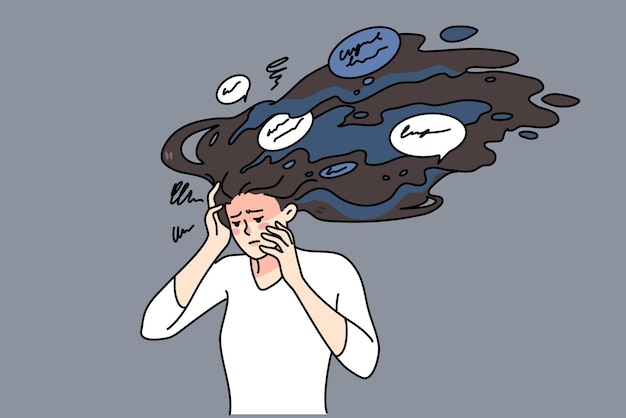 All people think about sex, but not all fantasies should be taken literally.
All people think about sex, but not all fantasies should be taken literally.
Women's erotic fantasies of submission and rape have their own logical explanation. University of North Texas researchers found that 57% of women have ever felt aroused by fantasizing about forced sexual intercourse with themselves as the victim. This can be explained by the desire of a woman to be desired - so much so that a man cannot control himself. Another explanation is a surge of endorphins, which enter the bloodstream more actively due to an accelerated heartbeat that accompanies a feeling of fear and disgust. The imaginary situation of coercion allows you to give freedom to secret "evil" desires without feeling guilty. Rape fantasies, which remain under the reliable control of our consciousness, have nothing to do with the desire to be raped in real life.
Politically incorrect thoughts
"If they know what I'm thinking, they'll hate me"
Hateful voice in your head that turns on when "another" appears in your field of attention - be it a person in a wheelchair, a woman in a veil , a brightly dressed transsexual or a foreigner with an unusual skin color. This voice, which you do your best to muffle, calls into question the adequacy, behavior, abilities and, in general, the presence of human qualities in "others".
This voice, which you do your best to muffle, calls into question the adequacy, behavior, abilities and, in general, the presence of human qualities in "others".
Mark Schaller, a psychologist at the University of British Columbia, believes that such thoughts are caused by a primitive defense mechanism that was formed at the dawn of mankind, when outsiders were by definition a source of threat. The mechanism of "psychological immunity", however, does not justify modern manifestations of intolerance - fat-shaming, xenophobia, religious prejudice or homophobia.
The good news is that automatically occurring politically incorrect thoughts can be overcome: psychologists advise you to stop thinking about how polite and open-minded others think you are, and concentrate on the personality of the person with whom you communicate.
Malevolent thoughts
“Your failure is my joy”
When we hear on the news that some girl was caught drunk driving and arrested, we are not touched. But if that girl turns out to be Paris Hilton, we feel a strange, malicious satisfaction that the Germans call "shadenfreude" (literally, "joy at harm").
But if that girl turns out to be Paris Hilton, we feel a strange, malicious satisfaction that the Germans call "shadenfreude" (literally, "joy at harm").
Australian psychologist Norman Feather (Flinders University) proved that we are more pleased with the failure of someone outstanding than the failure of a person of our equal status. When successful people fail, we feel smarter, more insightful, and more confident.
Perhaps this is how our inner desire for justice manifests itself. But where does the feeling of shame come from? According to Professor Richard Smith, author of The Joy of Pain, it makes no sense to beat yourself up for this banal emotional reaction. To overcome an attack of gloating, you need to imagine yourself in the place of the victim or concentrate on your own achievements and virtues, because the best antidote to envy is gratitude.
Cruel and bloodthirsty thoughts
“If I had a chainsaw now…”
You are calmly cutting onions in your kitchen, and suddenly the thought flashes through your head: “What if I slaughter my wife?” If thoughts of murder were considered a crime, most of us would be found guilty.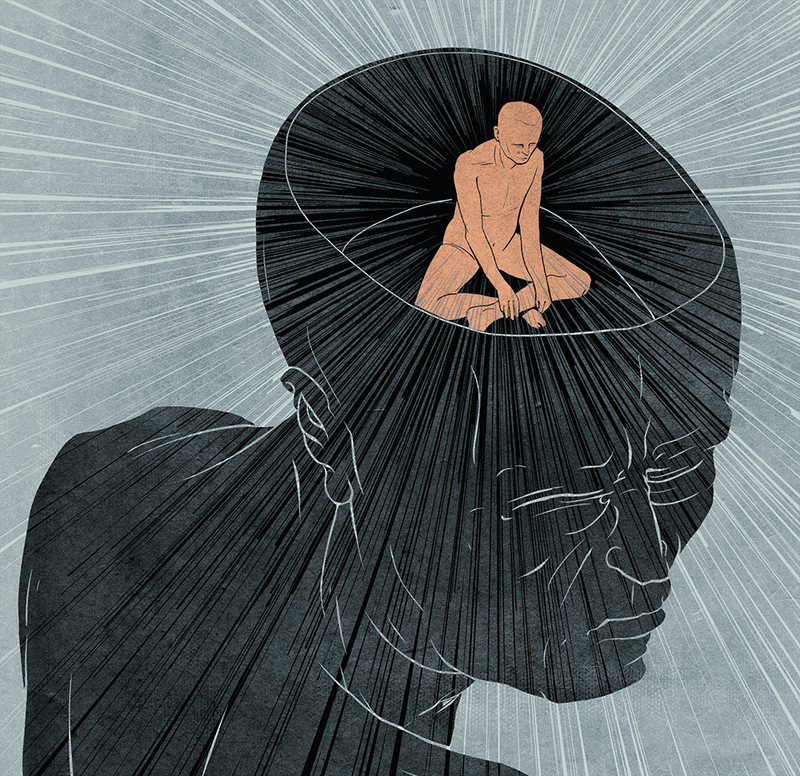 According to psychologist David Bass (University of Texas at Austin), 91% of men and 84% of women have ever imagined themselves pushing a person off a platform, strangling their partner with a pillow, or brutally beating a family member.
According to psychologist David Bass (University of Texas at Austin), 91% of men and 84% of women have ever imagined themselves pushing a person off a platform, strangling their partner with a pillow, or brutally beating a family member.
The researcher offered a radical explanation: because our ancestors killed to survive, they passed on to us a predisposition to kill at the gene level. Our subconscious always stores information about murder as a possible way to solve problems related to stress, power, limited resources and security threats.
However, in most cases, thoughts of violence do not precede actual violence, but, on the contrary, block it. The heartbreaking pictures that the brain paints make us analyze the situation before we act. The scenario plays out in the imagination, the prefrontal cortex turns on, and the eerie thought disappears.
But what happens to dark thoughts when we suppress them?
The Hydra's Dilemma
"The Method of Radical Acceptance. .."
.."
The thoughts we try to suppress become intrusive. This is reminiscent of the battle with the Lernaean Hydra: instead of a severed head, new ones grow back. When we try not to think about something, we only think about it. The brain constantly checks itself for the presence of a forbidden thought, and it pops up again and again in the mind, while feelings of shame and self-loathing distract us and weaken our willpower.
The painful process of suppression can be aggravated by depression and stress. The more effort we spend on fighting the obsession, the more time we need to recover and rest. For people with obsessive-compulsive disorder, dealing with unwanted thoughts can take several hours a day. None of us can fully control our minds. As Carl Jung wrote, we do not control the shadow "I", we do not create dark thoughts and desires of our own free will - which means that we cannot prevent their appearance either.
Dr. Baer recommends the Buddhist method of radical acceptance: when an unwanted idea comes up, try to accept it as just a thought, without deep meaning and hidden meaning. No need to condemn yourself or resist - just let the thought go. If she comes back, repeat again.
No need to condemn yourself or resist - just let the thought go. If she comes back, repeat again.
Another way to let go of an obsession is to write it down on paper and destroy it. This helps to distance oneself from an unpleasant thought, and then literally get rid of it. The “door effect” can also work - physically moving to another room helps the brain switch to a new topic and reset short-term memories. For difficult cases, there is a radical approach: do not let go of frightening thoughts, but, on the contrary, play them out in your imagination in full detail.
What is really important in dark thoughts? The value we give to them. We can perceive unpleasant thoughts as valuable objects for investigation - clues that the shadow self gives us. By analyzing its manifestations, we better understand others and ourselves. A gloomy, vile and uncomfortable thought becomes a source of inspiration. As Eric Wilson writes, imaginative people can turn destructive ideas into fuel for mental and emotional development.